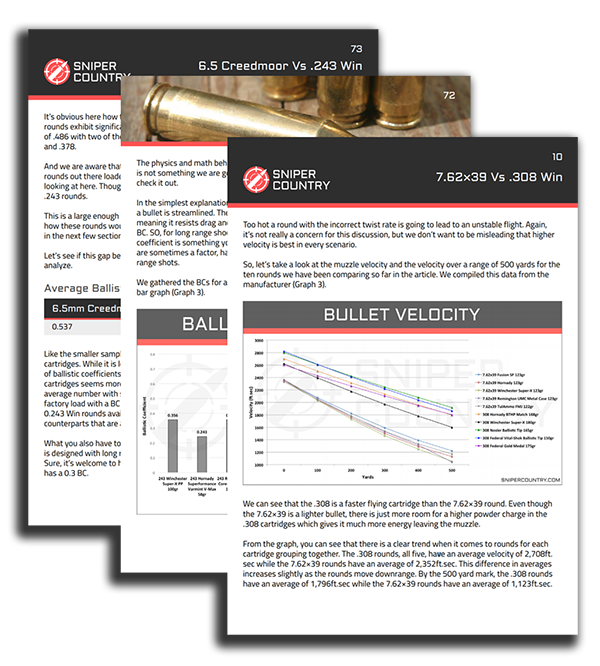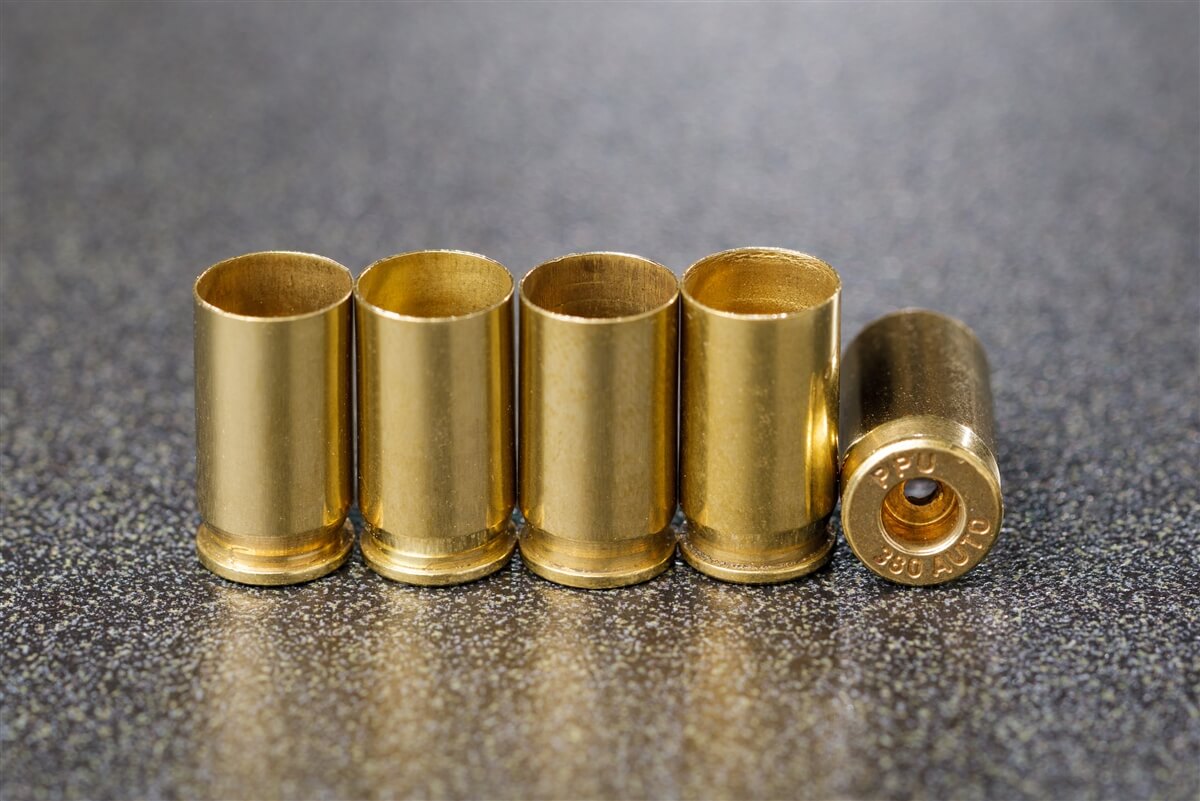Many hunters like myself use rimfire ammunition nearly as often as centerfire ammunition. But do I prefer one over the other? What is important about the rimfire vs centerfire debate?
And what is the main difference between centerfire and rimfire ammunition anyway?
Big spoiler…. powder, and power.

Fast Facts: Centerfire Vs. Rimfire
Bottomline the difference between these two is in how they are primed.
Centerfire cartridges use a separate little button-looking primer in the center of the case head. These can come in two main flavors, Boxer and Berdan primers, but they function basically the same way.
The button is filled with priming compound and there is a small anvil built into the button. When the firing pin strikes the primer it’s smashing that primer compound against the anvil to detonate it.
This injects a burning compound into the center of the case and ignites the powder within.

Rimfire cartridges have a solid case head with the lips of the case rounded over slightly. This creates a small gap around the rim where the priming compound can live.
During manufacturing, a drop of priming compound is placed in the bottom of the case and it is rolled to spread the compound evenly. It is then allowed to dry before being filled with powder and a bullet.
The firing pin strikes the edge of the rim and crushes the rim on itself to detonate the priming compound inside. This starts the burning process and ignites the powder.
Firearm Design and Function
The first difference to consider between these rounds is reliability. Because centerfire rounds have a separate self-contained primer designed for only one function, they are much more reliable.

The fact that the primer bead is built into the casing on a rimfire round makes it more prone to manufacturing flaws. This could cause misfires in these rounds.
That is why more people use rimfire rounds for hunting or practice, and more people use centerfire rounds for self-defense or military functions. When it absolutely must fire every time, people go with centerfire rounds.
The next is accuracy. On one hand, you could consider the rimfire round to be more accurate because it creates less recoil. Recoil can cause accuracy issues for a few reasons.
One is that anticipating recoil can cause people to flinch just as they are firing. Recoil also makes second or third shots less accurate as the force pulls your barrel off target and you have to line up your sights again.
The lack of recoil in a rimfire virtually eliminates these issues.

On the other hand, the lack of power and light bullet weight can make long distance shots more difficult. A round with less powder will travel at a slower speed and therefore will drop more over long distances.
Lighter bullets are also much more affected by crosswinds. If taking shots of 100 yards or more, you can easily see winds push a bullet six inches or more. Therefore, rimfire rounds are better for shorter distances.
For longer distances, the centerfire round is a better option.
Although, long range rimfire .22 LR has become very popular in the past several years. NRL22 and NRL22X matches are popular competitions where competitors shoot .22 LR out past 400 yards at times.

The last difference to consider is how the different rounds affect the design of the gun itself. On single shot guns there is no difference in reloading. However, there is a huge difference in semi-automatic weapons.
The rim itself in rimfire cartridges creates some challenges with feeding the round from the magazine to the chamber. This forced the gun manufacturers to be creative in solving these problems. We can see this in the Ruger’s rotary magazine and the extreme curvature of the Ruger BX25 magazine.

History of Rimfire & Centerfire
The .22 round was an innovator of its time. The first rimfire round ever created was .22 BB. This was also the first self-contained cartridge ever manufactured, opening up a whole new world for gun owners.

France, often being at the forefront of firearms technology, was where the first rimfire cartridges were invented. They actually had no powder, so the primer bead itself was the driving force for the bullet. These were incredibly low-power rounds designed to be shot indoors for target shooting fun, literally called parlor guns.
They added powder in 1857, giving it much more power and versatility. A .22 revolver then came on the scene. Many soldiers carried one of these in their pocket as a backup weapon in the field.
Rimfire continued to dominate the market until around 1870. By then centerfire cartridges started taking over, and we got the start of the rimfire vs centerfire argument.
Centerfire ammunition uses a self-contained primer inserted in the rear of the round. The use of fulminated mercury-based primers to ignite cartridges allowed for rounds to have significantly more power. Larger bullets and more powder gave weapons much more functionality for both hunting and defense.

Now all this powder created a design problem for manufacturers. Suddenly they had the ability to stuff a great deal of firepower into a cartridge, but the metal of the cartridge was not strong enough to contain this power.
It took some time for them to improve the metallurgy and optimize the potential of the centerfire round. When they did, hunters loaded their shotguns quicker. Soldiers could reach targets much further down the battlefield, with greater accuracy.
Design Comparison Rimfire Vs Centerfire
When looking at the design and function of centerfire vs rimfire ammunition, it is hard to deny that centerfire has an edge. There is a reason why almost every modern round is made centerfire.

The main edge is in the name, centerfire. It is struck in the middle of the cartridge, ensuring an even burn. When you hit the primer bead on a rimfire round, powder on one side of the round may be burning a bit faster than on the other side.
This uneven burn greatly reduces the amount of powder you can use in a round.
Another great improvement is the thicker cartridge shells. One of the design flaws of the rimfire is that you actually have to strike the edge of the cartridge for it to fire.
This weakens the cartridge wall and forces you to use thin enough material that the strike will ignite the primer bead. This is not necessary for a centerfire. It has a removable primer at the bottom.
This means that you can make the cartridge walls as thick as you like allowing more powder and larger bullets.

The centerfire is not only more powerful, but it also has another great advantage, it is left intact after it is fired. You can just remove the self-contained primer and reuse the cartridge.
If you have a press and the other tools needed to reload your rounds, you can save your cartridges and use them over and over.
BONUS OFFER: Get your free shooting range targets to print at home!
Get your free targets to print at home!
Differences between Centerfire and Rimfire For Hunting
While centerfire has an edge, when considering rounds for hunting, there are several pros and cons to consider.
Rimfire has long been king of the small game hunt.
The inexpensive rounds and the lack of recoil make them ideal for rabbits and squirrels. If you are just looking to put meat on the table, you really cannot beat a rimfire .22 round.

The real argument comes into play when you consider larger game. Some people claim that they can hunt larger animals with rimfire ammunition. While it is true that a perfectly placed shot with a rimfire round can take down almost any animal, the odds of success are not great.
I have debated this topic myself. If you want to be a responsible hunter, you really should save your rimfire rounds for small game.
The other variable you must consider is the quality of the bullet. Most rimfire bullets are made with softer metals designed to fracture and spread once impact is made.
This works fine for smaller game, but it is not ideal for the thick hides of larger animals.
There are centerfire rounds you can use for small game, but they tend to be much more expensive than rimfire rounds.
However, when it comes to large game you cannot beat centerfire rounds. They give you the power, bullet speed, and accuracy you need to take down the largest animals.

Also, when you are taking a shot at a large animal that you have been stalking for days the reliability of centerfire ammunition is comforting.
In Conclusion
When looking at the comparison between rimfire vs centerfire ammunition, we feel that centerfire is a better round.
While I use both types of ammunition on a regular basis, centerfire is obviously the superior design. It is reliable, accurate, powerful, and reloadable.
It is good for self-defense, military applications, big game hunting, and small game hunting. While the rounds are a bit more expensive, the ability to reload the cartridges more than makes up for the cost difference.
Both rounds definitely serve their purpose, but I do find centerfire rounds to be more versatile.

















2 Responses
very good explantion
The .22 is the only rimfire caliber, so as the article states, it is only for small game. Anything bigger than a rabbit requires bigger ammunition.